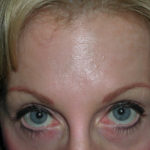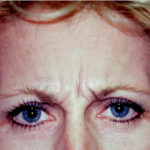The elimination or softening of unwanted facial expressions has been made possible by drug-induced chemodenervation, otherwise known as Botox injections. Botox continues to increase in popularity because it is highly effective at achieving facial expression manipulation through a simple set of injections without any visible signs of having it done or recovery. Botox is used mainly to control horizontal forehead wrinkles, glabellar furrowing (between the eyebrows) and crow’s feet with smiling.
Like all drugs, Botox is dose-dependent. It takes a certain amount of drug to create the desired effect. Botox is administered and paid for by the number of units to be injected. The goal (from any patient’s perspective) is to find the minimum effective dose (MED)…how little does it take to create the desired effect. The importance of MED in Botox is financially obvious, why pay for more than one really needs?

Based on these Botox MEDs, patients should not consider Botox injections unless they can afford that much Botox. I have had lots of patients who come in and what 8, 10 or 12 units because that is what they can afford. Such low dosing will not produce the result that they are seeking and is a setup for disappointment. In general, patients should be prepared to purchase at least 20 units for any given facial area.
Dr. Barry Eppley
Indianapolis, Indiana



